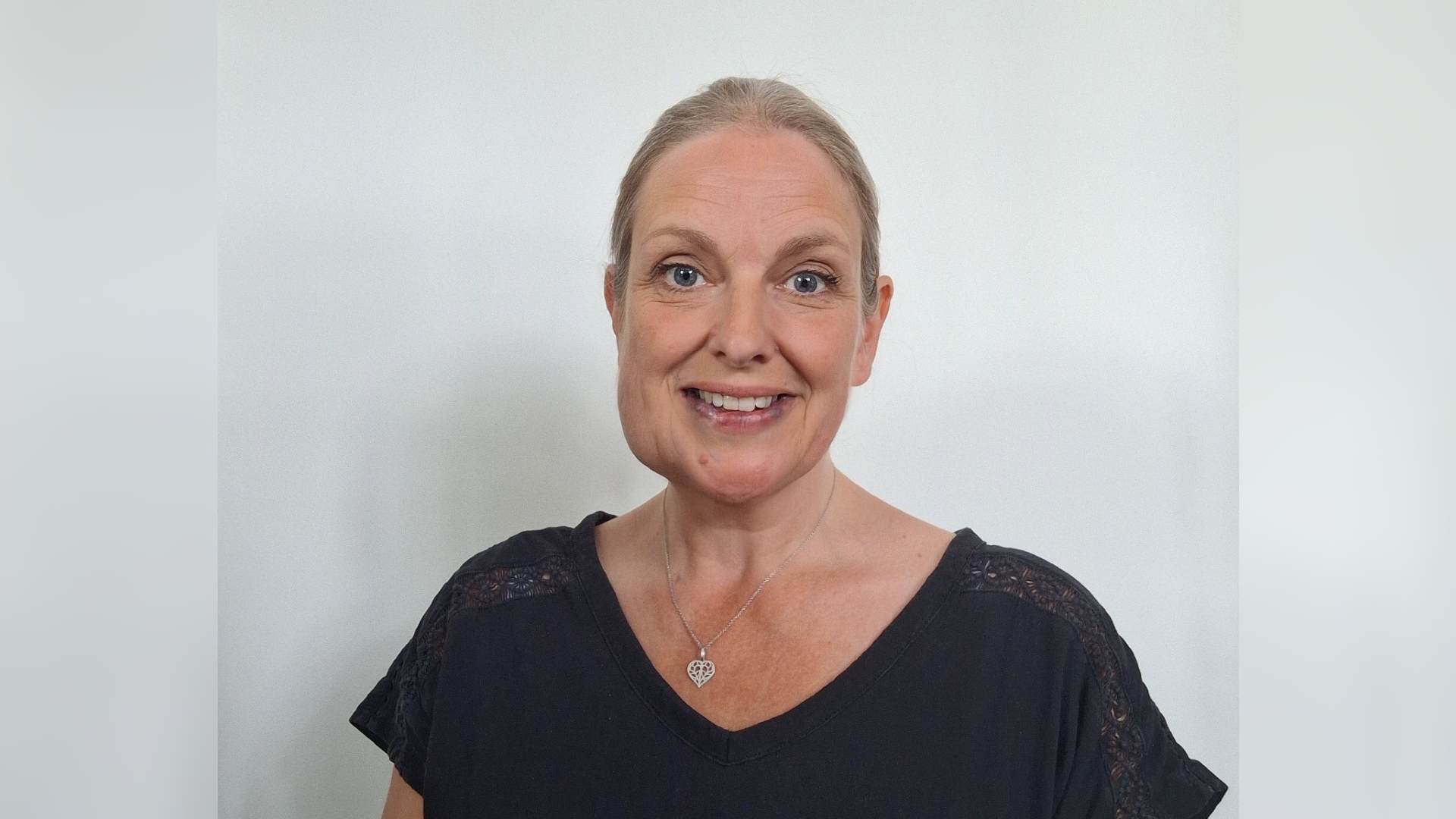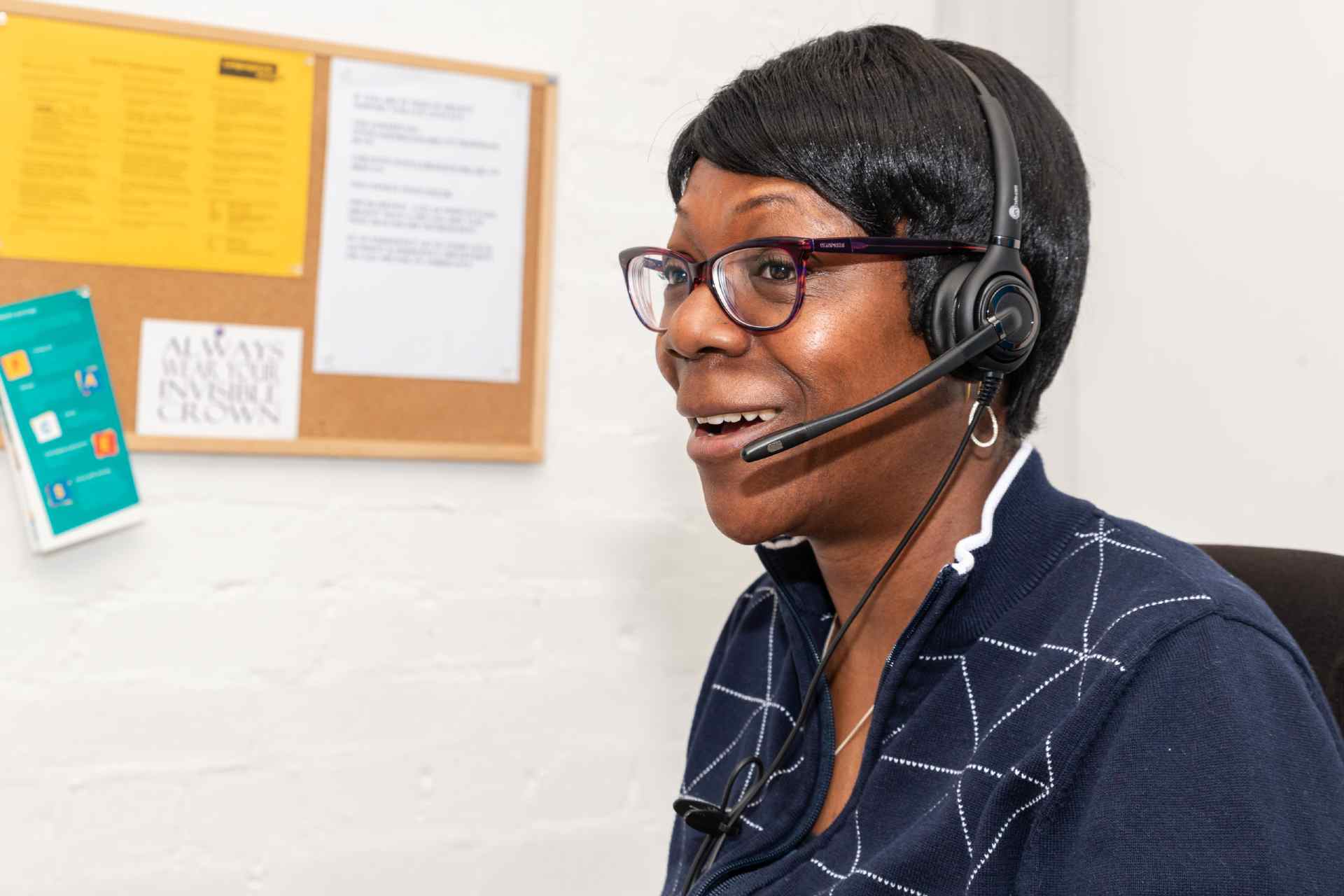I’m Jo, a 50-year-old mum to my lovely son Jake and a cute seven-year-old schnoodle!
When I was just a few years old, my mum noticed a small blue birthmark on my lip. It was diagnosed as a haemangioma. By the end of primary school, it had grown across my bottom lip, becoming lumpy in places. At that age, it didn’t bother me much, and no one really commented on it. Before starting secondary school, I had cryosurgery to try to reduce its size, as my lips had become uneven, but even then, I wasn’t too concerned.
Things changed in my mid-teens. I still remember overhearing a popular boy at school refer to me as “the girl with the blue lips.” He wasn’t being cruel, he simply didn’t know my name, but as a teenager, it was difficult to hear. People would also ask if I had ink on my lips, so I began wearing lipstick constantly to cover it up. Around the same time, a small lump appeared in my cheek, swelling from time to time. This was later diagnosed as the same condition.
Just before my 18th birthday, I developed a haemangioma on my tongue. Eating certain foods caused bleeding, which led to another surgery to reduce it.
In my early 30s, the cheek lump grew larger and more painful. Surgery was discussed but deemed too risky because of the chance of damaging facial nerves. I became more self-conscious, never wearing my hair up, as I depended on my hair to cover the swelling like a security blanket.

Jo’s hair became a way to hide her vascular anomaly
In 2007, I was diagnosed with blood cancer. Chemotherapy meant losing my hair, along with the protection it gave me. But the need to beat the cancer outweighed any worries about how I looked. Ironically, one side effect of chemo temporarily reduced the swelling from my vascular anomaly. Once treatment ended, the swelling returned.
I had more cryosurgery on my lips in 2013. Then, during lockdown, an accident changed things again when a frozen bottle of fizzy water exploded in my face, rupturing blood vessels. At A&E, I was referred to a consultant in Leeds, who called my condition a “vascular anomaly” and offered new treatment options. I took some time to consider them.
In 2022, I decided to go ahead. My decision came shortly after overhearing a group of people commenting on my face and the lump sticking out of it. They didn’t know I’d heard, and I tried to brush it off but my confidence took a hit. With the swelling worse than ever, I started to isolate myself more, avoiding busy places and walking my dog only in quiet spots or even in the dark.
The swelling also brought challenges in the modern, image-focused world. With so much of life happening online, I became more aware of my appearance on video calls. I’ve always had a career involving public speaking, and my face never bothered me before, even in front of hundreds of people. But now, with platforms like Teams and Zoom showing my own face back at me, and meetings being recorded, my anxiety grew. I found myself explaining my condition in advance of meeting people, just to avoid awkward questions.
Living with a vascular anomaly hasn’t been easy, but it’s taught me resilience and the value of embracing the good days.
After my divorce, I faced the new world of dating apps. I’d post photos that hid my swelling, but the thought of meeting someone in person and revealing the “real me” felt overwhelming. A good relationship later helped boost my confidence, but when that relationship ended, I didn’t return to the dating scene due to feeling so conscious of how I look.
In 2025, I underwent sclerotherapy which is a relatively simple outpatient procedure where injections aim to reduce blood flow to the affected blood vessels. The swelling was significant at first, but within weeks I noticed a real difference. I still have days when the swelling is visible, but many more when it’s more manageable. I’m now waiting for my second treatment.
Living with a vascular anomaly hasn’t been easy, but it’s taught me resilience and the value of embracing the good days. After following Changing Faces and watching Love My Face I felt inspired to share my experience, which I hope may benefit others. I really struggled to find real life stories about people who had undergone sclerotherapy and was hesitant to have it done as I didn’t know what to expect.
Knowing there is a community of people like me is comforting. None of us are alone in this.

